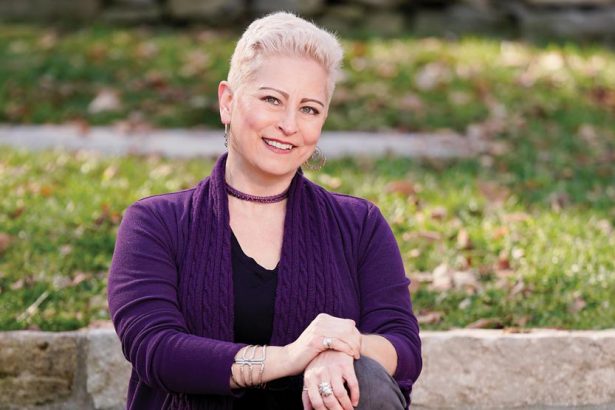Patient Search
 |
 |
|
KaCrole Higgins was diagnosed with breast cancer in 2020. “In May 2020, I found a lump in my breast. I cried. By June, it was diagnosed as breast cancer, triple positive, stage 1A. While getting this cancer diagnosis was devastating, it also became an opportunity. Suddenly, the cancer gave me clarity. It gave me clarity about what was important, what was good in my life, what was toxic in my life, and what I needed to do.” Click below to read more of KaCrole’s story |
If Landon Ryan had been diagnosed with bilateral retinoblastoma 10, 20 or 30 years ago, she might not be here today with nearly perfect vision.Thanks to recent improvements in the treatment for this rare form of cancer that almost exclusively affects children under the age of 5, the diagnosis had the power to change Landon’s life when she was 11 months old, but not to take it — or her eyesight. Click below to learn more about Landon and her story. https://momentum.vicc.org/2022/04/brighter-outlook/ |
Evolutionary Inspired Therapy for the Treatment of Fusion Positive Newly Diagnosed, Metastatic Rhabdomyosarcoma
Multiple Cancer Types
This phase II trial investigates evolutionary inspired therapy in treating fusion positive rhabdomyosarcoma that is newly diagnosed and has spread to other places in the body (metastatic). Chemotherapy drugs, such as vinorelbine, vincristine sulfate, and actinomycin D, work in different ways to stop the growth of tumor cells, either by killing the cells, by stopping them from dividing, or by stopping them from spreading. Cyclophosphamide is used to decrease the body's immune response and may inhibit DNA replication and initiate cell death. This study is being done to determine which of 4 different therapeutic treatments will have the best chance of the disease not worsening or coming back.
Pediatrics,
Sarcoma
II
Borinstein, Scott
NCT04388839
VICCPED2134
Treosulfan-Based Conditioning Regimen before a Blood or Bone Marrow Transplant for the Treatment of Bone Marrow Failure Diseases (BMT CTN 1904)
Multiple Cancer Types
This phase II trial tests whether treosulfan, fludarabine, and rabbit antithymocyte globulin (rATG) work when given before a blood or bone marrow transplant (conditioning regimen) to cause fewer complications for patients with bone marrow failure diseases. Chemotherapy drugs, such as treosulfan, work in different ways to stop the growth of tumor cells, either by killing the cells, by stopping them from dividing, or by stopping them from spreading. Fludarabine may stop the growth of cancer cells by blocking some of the enzymes needed for cell growth. rATG is used to decrease the body's immune response and may improve bone marrow function and increase blood cell counts. Adding treosulfan to a conditioning regimen with fludarabine and rATG may result in patients having less severe complications after a blood or bone marrow transplant.
Hematologic,
Pediatrics
II
Connelly, James
NCT04965597
VICCPED2192
Treatment Response and Biomarker-Guided Steroid Taper for Children with GVHD
Multiple Cancer Types
This phase II trial studies the treatment response for patients with acute graft-versus-host disease (GVHD). GVHD occurs when donor immune cells attack the healthy tissue of a bone marrow or stem cell transplant patient. The standard treatment for GVHD is to lower the activity of the donor cells by using steroid medications such as prednisone. But steroid treatment may cause many complications and the risk of these complications increases with higher doses of steroids and longer treatment. It is important to find ways to decrease the steroid treatment in patients who do not need long courses. Researchers are doing this study to find out how many subjects respond well to lower steroid dosing based on a blood test (GVHD biomarker) and if they develop fewer complications.
Miscellaneous,
Pediatrics
II
Kitko, Carrie
NCT05090384
VICCPED2213
Neuroblastoma Maintenance Therapy Trial
Multiple Cancer Types
Difluoromethylornithine (DFMO) will be used in an open label, single agent, multicenter,
study for patients with neuroblastoma in remission. In this study subjects will receive 730
Days of oral difluoromethylornithine (DFMO) at a dose of 750 mg/m2 250 mg/m2 BID (strata 1,
2, 3, and 4) OR 2500 mg/m2 BID (stratum 1B) on each day of study. This study will focus on
the use of DFMO in high risk neuroblastoma patients that are in remission as a strategy to
prevent recurrence.
study for patients with neuroblastoma in remission. In this study subjects will receive 730
Days of oral difluoromethylornithine (DFMO) at a dose of 750 mg/m2 250 mg/m2 BID (strata 1,
2, 3, and 4) OR 2500 mg/m2 BID (stratum 1B) on each day of study. This study will focus on
the use of DFMO in high risk neuroblastoma patients that are in remission as a strategy to
prevent recurrence.
Endocrine,
Neuroblastoma (Pediatrics),
Neuroendocrine,
Pediatrics
II
Pastakia, Devang
NCT02679144
VICCPED16157



